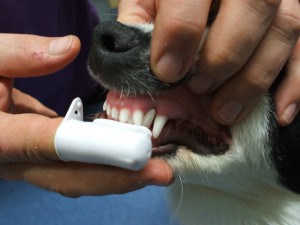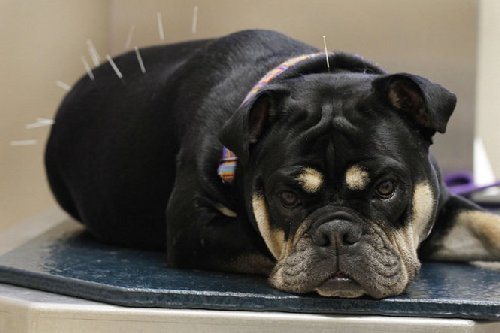
Nashville, TN – Even with the increase in awareness about pet dental health and it’s overall effects of wellness it provides pets, the majority of pet owners still resist the advice of veterinarians to brush the teeth of their pets. Most owners surveyed find it difficult and distressing, and don’t want their pet to stay away from them due to fear of the brush. With February being National Pet Dental Health Month, now is a good time for owners to set some resolutions to renew their commitment to their pet’s teeth.
Pet owners have turned to dental treats as a happier alternative to brushing. While most dental treats do provide a benefit, there are brands on the market that are ineffective at providing dental benefits. It can be difficult to know what works, so the Veterinary Oral Health Council (VOHC) has launched a seal to add to product labels to provide consumers with validation before making a product purchase. Dr. Jan Bellows, a leading veterinary dentist, diplomate and president-elect of the American

Veterinary Dental College, the administrator of the VOHC says, “The VOHC seal confirms a product is efficacious in reducing buildup of plaque and tartar, the leading cause of oral disease, which can reduce a pet’s healthy lifespan. Walk into any pet store and you will find dozens of treats that claim to clean teeth. While it’s easy to make teeth-cleaning claims, formulating a treat that significantly protects teeth is difficult. The VOHC seal is there to help pet owners and veterinarians recognize which products are proven to work.”
The VOHC performs medical trials to determine the effectiveness of a product. This includes testing the same diet among a group of dogs for 30 days, with a sample population receiving the dental treat in addition. The sample population most show cleaner teeth or the seal will not be awarded.
Identifying the seal on a product will enable you to provide a daily alternative to brushing, but doesn’t mean you should stop brushing altogether. Veterinarians stress the importance of brushing by recommending flavored pastes and finger brushes to help relax your pet when you brush, and, of course if you haven’t been to the vet this year, to stop in and have a thorough exam performed.






[…] begin when the pet is young. Brushing the teeth twice a day is the most common and […]
[…] Proper prevention of dental disease should begin when the pet is young. Brushing the teeth twice a day is the most common and recommended form of prevention, but it can be difficult to […]
Comments are closed.